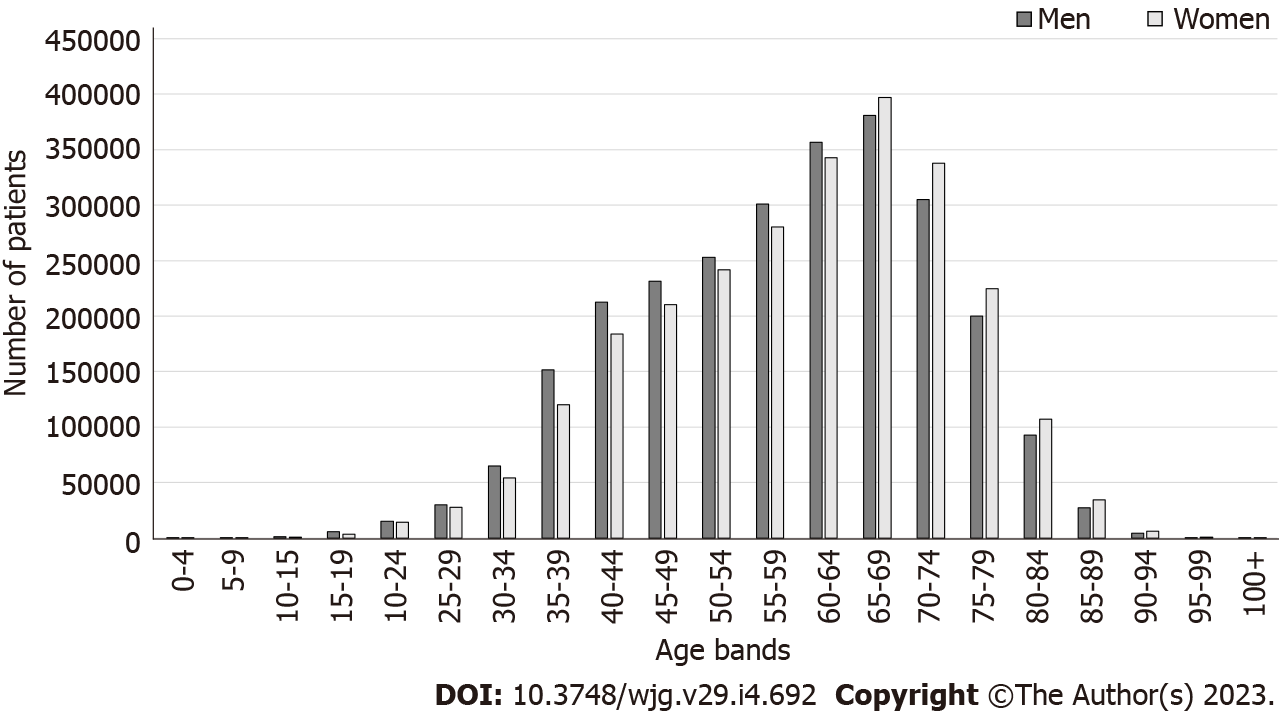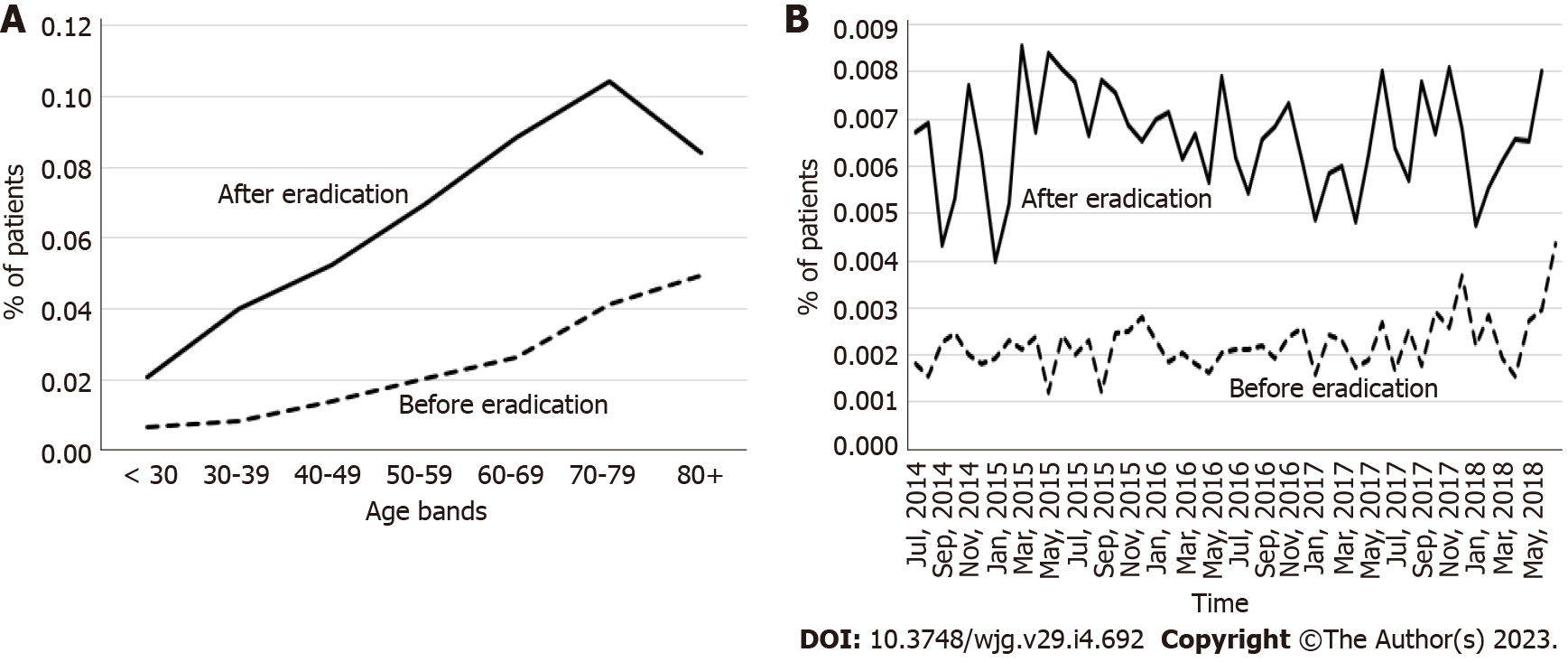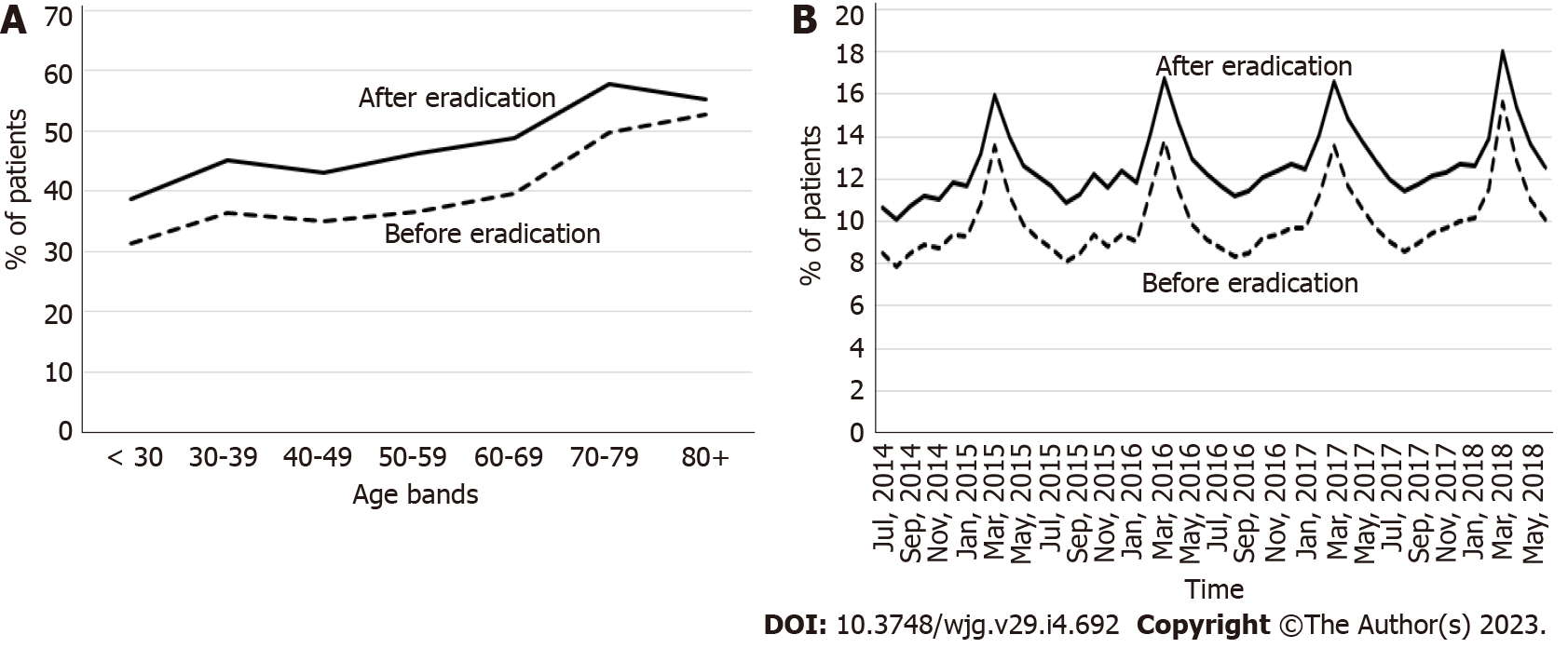Copyright
©The Author(s) 2023.
World J Gastroenterol. Jan 28, 2023; 29(4): 692-705
Published online Jan 28, 2023. doi: 10.3748/wjg.v29.i4.692
Published online Jan 28, 2023. doi: 10.3748/wjg.v29.i4.692
Figure 1 Number of patients who received primary Helicobacter pylori eradication therapy, by sex and age group at the time of eradication.
Figure 2 Incidence of gastroesophageal reflux disease in the 3-year period before the year of eradication and after the year of eradication.
A: By age categories; B: By calendar year and month.
Figure 3 Incidence of Barrett’s esophagus in the 3-year period before the year of eradication and after the year of eradication.
A: By age category; B: By calendar year and month.
Figure 4 Incidence of inflammatory bowel disease in the 3-year period before the year of eradication and after the year of eradication by age category.
A: Crohn’s disease; B: Ulcerative colitis.
Figure 5 Prevalence of allergic diseases in the 3-year period before the year of eradication and after the year of eradication.
A: By age category; B: By calendar year and month.
Figure 6 Change in the average body mass index and percentage of patient with metabolic syndrome before and after the year of eradication.
A: Average body mass index; B: Percentage of patients with metabolic syndrome. Year 0 is the year of primary eradication, and negative values represent years before primary eradication. BMI: Body mass index.
- Citation: Mizukami K, Sugano K, Takeshima T, Murakami K. Disease trends after Helicobacter pylori eradication based on Japanese nationwide claims and the health check-up database. World J Gastroenterol 2023; 29(4): 692-705
- URL: https://www.wjgnet.com/1007-9327/full/v29/i4/692.htm
- DOI: https://dx.doi.org/10.3748/wjg.v29.i4.692














